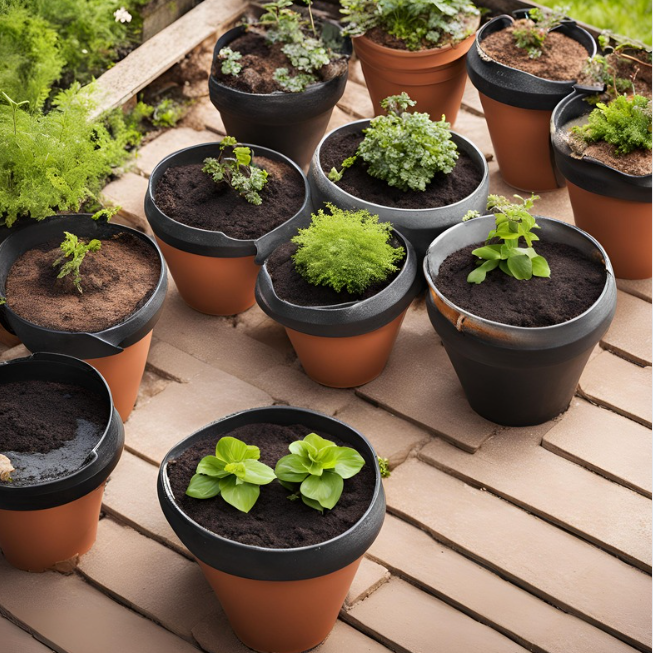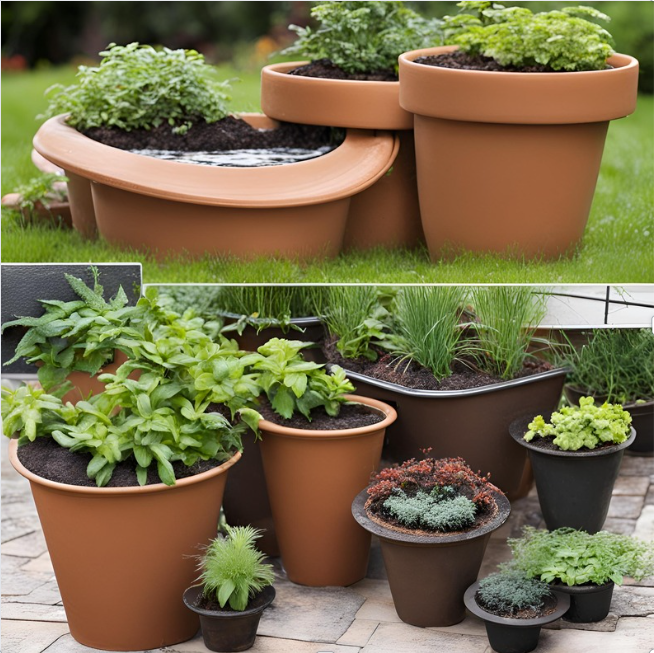Skip to content
Improving Drainage for Plant Pots with Effective Methods

Introduction
- Hook: Start with a compelling fact or anecdote about the importance of proper drainage for plant health.
- Thesis Statement: Introduce the topic of improving drainage for plant pots, highlighting its significance for plant vitality.
- Importance: Briefly explain how poor drainage can lead to problems such as root rot and reduced plant growth.
Section 1: Understanding the Importance of Drainage
- Plant Health: Discuss the role of drainage in preventing waterlogging and root diseases.
- Soil Aeration: Explain how proper drainage ensures adequate oxygen reaches plant roots.
- Nutrient Uptake: Describe how effective drainage helps plants absorb nutrients more efficiently.
- Prevention of Root Rot: Explain the causes and consequences of root rot and how good drainage can prevent it.
Section 2: Common Problems Caused by Poor Drainage
- Waterlogging: Impact on plant roots and overall health.
- Compacted Soil: How poor drainage can lead to soil compaction and reduced root growth.
- Fungal Diseases: Increased risk of fungal infections in waterlogged conditions.
- Stunted Growth: The link between inadequate drainage and stunted plant development.
Section 3: Assessing Your Current Plant Pot Drainage
- Visual Inspection: Checking for drainage holes and signs of waterlogging.
- Soil Test: Simple methods to test soil drainage capability (e.g., water infiltration test).
- Pot Positioning: Ensuring pots are placed correctly to allow for proper drainage.
Section 4: Effective Methods for Improving Drainage
- Choosing the Right Pot:
- Importance of drainage holes.
- Types of pots that offer better drainage (e.g., terracotta vs. plastic).
- Using Potting Mixes:
- Benefits of well-draining soil mixes.
- Ingredients to look for (e.g., perlite, vermiculite, sand).
- Adding Drainage Layers:
- Using materials like gravel, stones, or broken pottery at the bottom of the pot.
- Pros and cons of different drainage layer materials.
- Elevating Pots:
- Benefits of pot feet, pot stands, or saucers.
- How elevation improves air circulation and drainage.
- Drilling Additional Holes:
- When and how to drill extra holes in pots to enhance drainage.
- Safety tips and tools required for drilling.
- Incorporating Organic Matter:
- How adding compost or organic matter can improve soil structure and drainage.
- Using Mulch:
- Benefits of mulching on top of the soil to prevent compaction and retain moisture balance.
Section 5: Advanced Techniques for Enhanced Drainage
- Wicking Systems: How to set up a wicking system to improve water movement through the soil.
- Capillary Matting: Using capillary mats under pots to help with consistent moisture levels and drainage.
- Self-Watering Pots: Overview of self-watering pots and how they help regulate water and drainage.
Section 6: Maintenance Tips for Ensuring Long-Term Drainage Efficiency
- Regular Soil Aeration: Techniques for aerating soil periodically.
- Repotting: When and how to repot plants to refresh soil and improve drainage.
- Seasonal Adjustments: Adjusting watering and drainage methods based on seasonal changes and plant needs.
- Monitoring Plant Health: Signs to watch for that indicate drainage issues.
Section 7: Common Myths and Misconceptions
- Gravel Layer Myth: Addressing the misconception that a gravel layer alone ensures good drainage.
- Overwatering vs. Poor Drainage: Clarifying the difference and how to manage both issues.
Conclusion
- Summary: Recap the key points on the importance of drainage and effective methods to improve it.
- Final Thoughts: Emphasize the benefits of proper drainage for healthy, thriving plants.
- Call to Action: Encourage readers to assess their plant pot drainage and implement the discussed methods for improvement.


